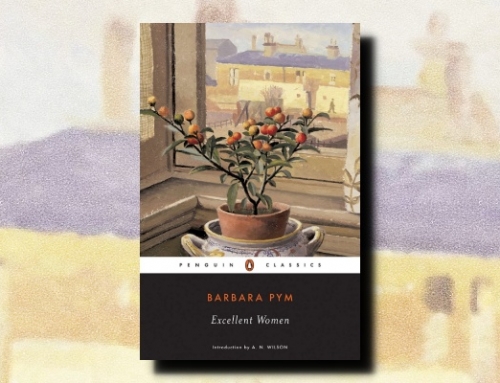The Parable of the Blind by Gert Hofmann (Der Blindensturz, 1985) translated from the German by Christopher Middleton (1986) Fromm International (1989) 152 pp
The more I think about Gert Hofmann’s Lichtenberg & the Little Flower Girl (my review here), the more sure I am that it will be on my year-end best list. I loved that charming and yet dark book. Consequently, I’ve been slowly getting my hands on more of Hofmann’s work, which has been translated sporadically by various publishers over the past thirty years. In this quest, I was excited to see that one of Hofmann’s books was inspired by a Pieter Bruegel the Elder painting The Blind Leading the Blind. Thanks in part to Michael Frayn’s fantastic Headlong, which was on my year-end best list last year (my review of Headlong here; my 2010 year-end best list here), I couldn’t resist reading Hofmann’s The Parable of the Blind.

First things first:
On the day when we’re to be painted — yet another new day! — a knocking on the barn door drags us out of our sleep.
Just reading that simple opening sentence about “the knocker” reminded me of one of the things I liked best about Hofmann’s style in Lichtenberg & the Little Flower Girl: there’s an unabashed use of exclamation marks that lightens to the point of exuberance the tone of what might otherwise be very depressing. It’s an emotional mix of humor and seriousness that makes that book transcendent, and this first sentence in this book had me hoping for much the same thing here. I wasn’t disappointed.
The speaker — that “we” — is a group of blind men who wander from town to town. Hofmann establishes their blind perspective right away:
Around us thick soft flakes of snow, clearly remembered, are falling into the gentle folds of the countryside and burying everything: the plow, the weeds, the trees, as well as all the other things we gave up long ago, but which probably still exist.
The word “probably” gets repeated over and over, much as “And then?” did in Lichtenberg & the Little Flower Girl. It’s a constant reminder that even while we are reading about what’s happening in the physical world, the person speaking is seeing complete blackness. Neither we readers nor the speakers are actually seeing what’s going on, but somehow it is being conveyed. Or, at least, something is being conveyed.
In fact, these blind men aren’t sure of much of anything (though I’m not saying this is the conventional “unreliable narrator”; it’s much more about the transfer through words or images than about the reliability of the speaker). For example, these men aren’t even sure of each other. They are led by one who, probably, can see well enough to distinguish light from dark. We have reason to suspect otherwise. One among them was blinded unnaturally, probably for punishment, and has taken the place of one who died — they figure they will probably push him in a ditch and leave him some day
One of the biggest questions they have is why the painter would be interested in painting them. No one really knows. Even the beloved knocker (the kind-ish man who woke them up and eventually took them to a rather humiliating breakfast) cannot fathom why anyone would want to paint them. Others are downright mean and dismissive:
And then the man who isn’t the knocker suddenly flies into a rage and jumps around on the ground in front of us. Perhaps because we mistook him for the knocker, perhaps for another reason. And he shouts that it’s wrong to talk with us and to be concerned with us and to let us run around because we bring disorder into everything, thoughts, people, the air. And that we trample down everything that’s in our way. Look at them, he exclaims, and probably he’s pointing at us.
At once we think we might be standing among flowers and we step back, but aren’t certain if we’re stepping out of one lot of flowers into another.
The story progresses as these blind men try to find the painter’s house. As you might imagine, it’s not a pleasant journey. Of course, Hofmann’s prose style leavens the seriousness of what’s going on as these men are subjected to one humiliation after another. That’s not to say the tone is always comic: “How often we tell ourselves: Let’s just go to sleep! — and forget that we’re already asleep.” And the best is when the comic and the dark come together in fine long passages, like this one when they finally get to the painter’s:
The painter, who probably noticed us at once and is probably striding up and down by the probably wide-open window of his house, says — we can’t hear it all — that he’s always been surrounded by whole spaces full of pictures, afflicted by them. These spaces, he says, come to me, they come into my house. These are the spaces in which he lives, though of course there are also the other ones. How many times he’s sat, especially on the long winter evenings, in the middle of those spaces and the pictures have shown him the world. More and more often now, since the slaughter at Liège, the pictures are of people dying and dead. The pictures in these spaces, now without a sky, with a high horizon, are all filled, to the limit of the frame, gold, my good friend, with images of people and things dying, perishing, or dead already. All in extremis, he says. Like these here, he adds and probably points out through the window, thus probably at us.
Asking the blind men to practice stumbling and then falling into a ditch (over and over again) so he can get the interior of their mouths correct, even the master, who offers them this great honor, is cruel and then dismissive.
This is a strange book filled with a bleak outlook on these outwardly jovial men who live in total darkness and alienation. Certainly, the terror is expressed as well here as it is in the visual art by Bruegel himself.
That said, I liked it much less than Lichtenberg & the Little Flower Girl, which in general I found to be both more vivacious and more bleak. This is certainly a good read, though, and I recommend it.









I like that “which probably still exist”!
Hi Trevor,
An excellent review, as usual, and one that whets my appetite for Hoffmann. If it is not a long book, I will look for it in German. (I love to read books in German, but my sluggish pace of comprehension makes longer texts too onerous. Language-Originals are also hard to come by here in the States at affordable rates.)
I wonder what you make of his use of the painting as inspiration. Is it mentioned in the text? or is this background information supplied only by the author or his editor? I am convinced by your own reaction – that the book has the same emotional effect as the painting – that this is a powerful and intentional “message”. I’ll lok forward to finding Hofmann’s work and get back to you!
Regards,
Kevin
Very nice Trevor, and good to see you following up and reading more by Hofmann. Of the two you’ve read so far this sounds the more tempting to start with for me, do you think there’s a pressing reason to prefer one over the other?
How did the translation compare to the Michael Hofmann translation of Little Flower Girl?
Also, on an unrelated note, I just got back from holiday and found Joseph Roth’s The Leviathan had arrived while I was away. Thank you very much. I’m sure I’m going to enjoy it.
Max, I don’t think there’s a pressing reason to read one before the other. I would say, though, if you read this one and are at all wavering to read more (which I doubt, but even so) you should still read Lichtenberg. For me it is funnier and darker, a nice combination that Hofmann appears to do very well.
As for the translation, I was a bit worried this wouldn’t rate next to the Hofmann translation, but it was wonderful. Middleton was superb here.
And I’m glad The Leviathan arrived! It took me a bit longer than I hoped to get it in the mail, but . . . happy reading!
Thanks Trevor. I probably will get this one first but we’ll see. Certainly you’ve really encouraged me to look at Hofmann.
I’ve been away a couple of weeks so The Leviathan may have been sitting on my desk for a while. Thanks regardless – it really is very much appreciated particularly given my deep fondness for Joseph Roth.